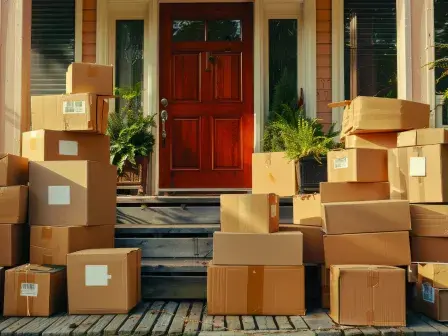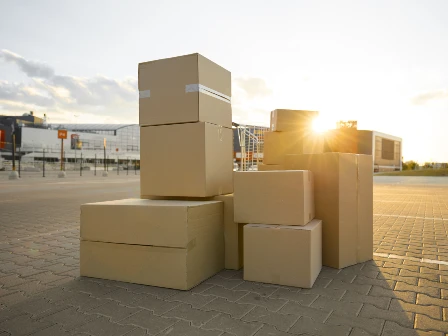Unique ZIP Codes - What they are and how to use them

First of all, what is a unique ZIP Code anyway? Aren't all ZIP Codes unique? (You're different, just like everybody else. 😉)
Unique ZIP Codes are non-geographic (they aren't linked to a street) and given to larger organizations or institutions that have their own internal mail delivery system. (Think college campuses, major corporations, government buildings, large medical facilities, military installations, etc.)
The USPS assigns these places their own unique ZIP Code to ensure timely and direct mail traffic. Instead of delivering mail to each suite, floor, or room, the USPS only delivers mail to the entire organization at one point. From there, all mail addressed to the unique ZIP Code is routed and delivered internally by the organization rather than by the USPS.
Smarty can tell you if an address is in a Unique ZIP Code, just look for "zip_type": "Unique" in the response of our US Street Address API or with our US Address Verification tool linked here. Or, read on below to learn how unique ZIP Codes work.
| Try out our US Street Address API | Try out our US Address Validation |
|---|---|
We'll help you learn more if you read along below. Here's a little road map:
- Why unique ZIP Codes matter
- Unique ZIP Code examples
- How to handle addresses with unique ZIP Codes
- What if I don’t want to use a super Smarty verification API?
Why unique ZIP Codes matter
Organizations delivering their own mail saves the USPS a ton of time and energy in the sorting process. Several industries contain buildings or campuses that only connect through walkways for students and staff, making it cumbersome and time-consuming for a USPS employee to deliver there.
Other organizations contain multiple suites or offices on several floors with people who work in more than one department (think hospital staff who work in both the ER and Labor and Delivery wards or professors at a university who teach multiple courses). Rather than hunting these people down, the USPS just puts their mail in a drop zone and goes to their next delivery point.
If a customer is trying to send a package to an individual using a unique ZIP Code, they may encounter a few problems down the line. For example, if an address includes a valid, unique ZIP Code, it's always marked as “deliverable,” even if the rest of the information is junk. This can become a problem because the poor delivery point sorting guy or gal may just completely toss whatever piece of mail that is because that's the easier route than deciphering where it was SUPPOSED to go.
Unique ZIP Code examples
For all the technical people out there, let's see how this can be an issue by looking further into the coded response in our US Street Address API. You can identify addresses with unique ZIP Codes by looking for U1 in dpv_footnotes or a Q in footnotes.
If you enter the following address (which is obviously not correct), our address validation will say it's a deliverable address:
Street 1: 100 Can-you-ski Ave
City: Danville
State: PA
Zip: 17822
Here are the (abbreviated) results from our service:
[
{
"input_index": 0,
"candidate_index": 0,
"delivery_line_1": "100 Can-You-Ski Ave",
"last_line": "Danville PA 17822-0001",
"delivery_point_barcode": "178220001009",
"components": {
"primary_number": "100",
"street_predirection": "N",
"street_name": "Academy",
"street_suffix": "Ave",
"city_name": "Danville",
"default_city_name": "Danville",
"state_abbreviation": "PA",
"zipcode": "17822",
"plus4_code": "0001",
"delivery_point": "00",
"delivery_point_check_digit": "9"
},
"metadata": {
"record_type": "F",
"zip_type": "Unique",
"county_fips": "42093",
"county_name": "Montour",
"carrier_route": "C000",
"congressional_district": "09",
"rdi": "Commercial",
"elot_sequence": "0002",
"elot_sort": "A",
"latitude": 40.96671,
"longitude": -76.60525,
"precision": "Zip8",
"time_zone": "Eastern",
"utc_offset": -5,
"dst": true
},
"analysis": {
"dpv_match_code": "Y",
"dpv_footnotes": "AAU1",
"active": "Y",
"footnotes": "Q#X#",
"enhanced_match": "postal-match"
}
}
]
(Notice the Q#X# and U1 footnotes.) Why does this happen? What the heck?
It's because, technically speaking, 17822 is a unique ZIP Code. Since mail to addresses within a unique ZIP Code is handled by the organization that owns the ZIP Code (and not by the USPS), no verification is performed on the street address. The address is technically deliverable with nothing more than a ZIP Code, making it valid.
However, after being delivered to the unique ZIP Code's delivery point, mail may have to go through a very long process before it finds it's intended destination. If the first line of the address is left blank or contains incorrect information before the unique ZIP Code suddenly becomes an internal problem. The organization's staff (maybe the front desk) will have to pull out all the stops, messaging multiple departments, looking through company datasets, sifting through leasing documentation, or even meandering aimlessly until they bump into the intended recipient. The designated sorter may even just decide your package isn't worth delivering and throw it away. Yikes.
Is there anything to do about this?
How to handle addresses with unique ZIP Codes

The short answer? Have a verification API that knows the difference between a deliverable address and a valid address. (Hey, Smarty has one of those… Feel free to try it out on our Live API Playground 🛝). Remember, just because an address is formatted like an address and looks pretty doesn't mean that it actually is one. We don't need any more packages being delivered to random parking lots…
In our example, you'll notice that the result returns a Q#X# response. This designates that although the unique ZIP Code is a deliverable drop zone or delivery point (the parcel or mail will make it to the front desk), it isn't a verifiable address beyond that point. The address components before the ZIP Code can't be validated.
If, however, the result pulls a Q# in the footnotes, you'll know with complete certainty that your secret agent files will make it to the right person in the FBI after first taking a quick stop at the front desk.
What if I don't want to use a super Smarty verification API?
Well, our feelings might be a little hurt, but we have some solutions for you, too.
Our most straightforward recommendation is to notify the customer via a confirmation dialogue box (pop-up message) that the address they're entering belongs to a unique ZIP Code and thus can't be validated beyond the ZIP Code, so precise delivery and correctness aren't guaranteed.
A longer avenue would be to contact the owner of any locations with unique ZIP Codes. They'll typically be able to provide you with a list of suites and the people associated with them. (We're not saying they WILL, but you can definitely ask.)